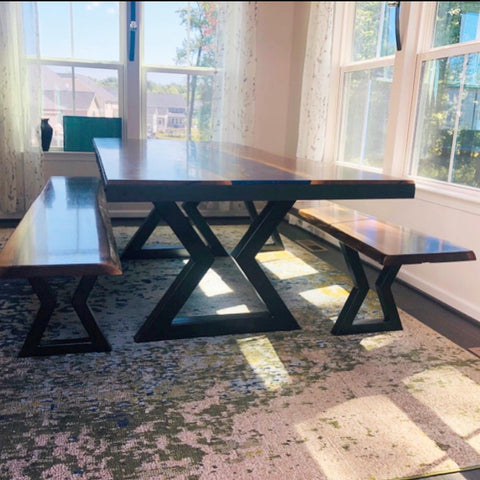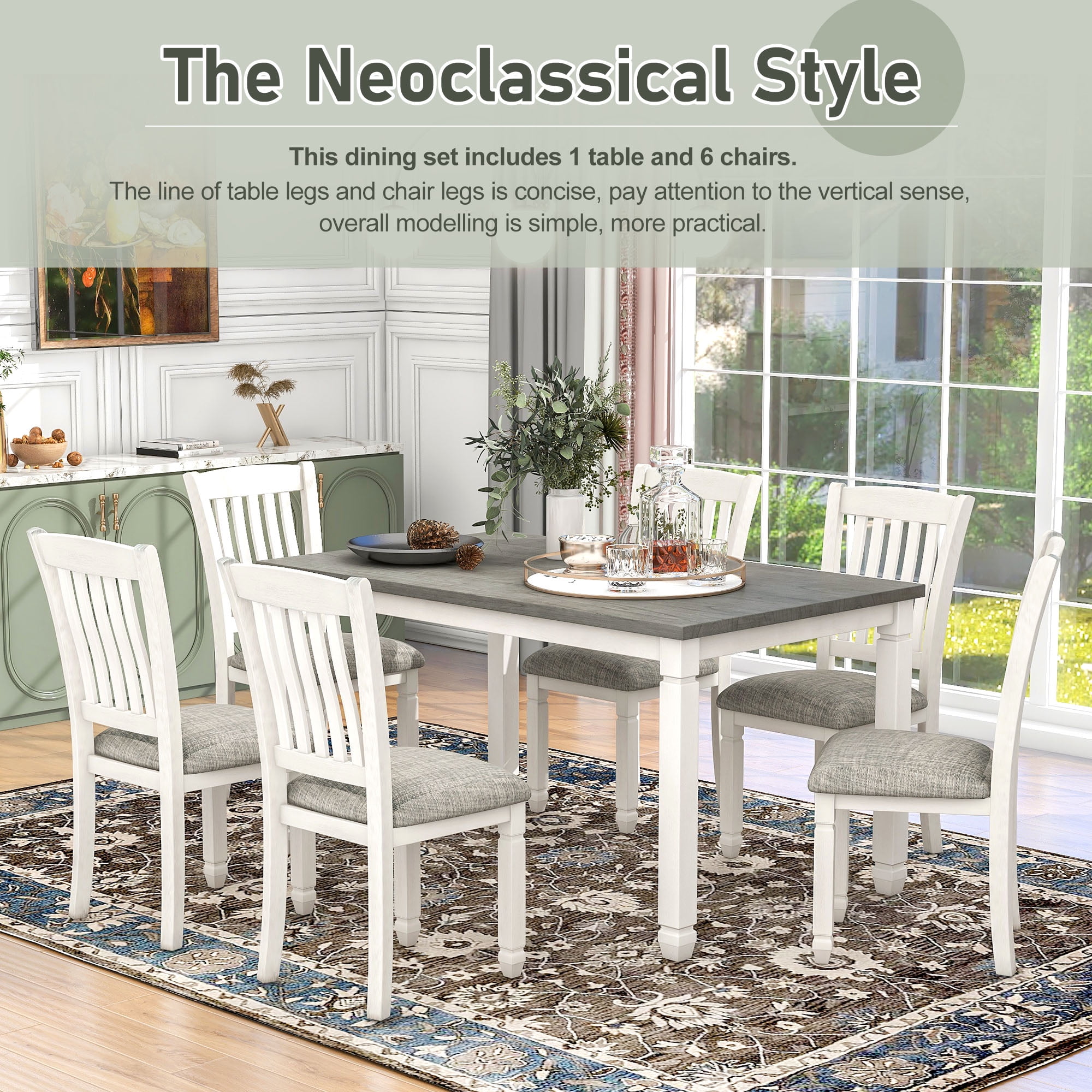Transform Your Dining Space with Stylish Dining Room Table Legs
Wiki Article
From Typical to Modern: Discover the Suitable Dining-room Table Legs for Your Design
The selection of eating space table legs plays a pivotal role in defining the general character of your space, bridging the space in between traditional craftsmanship and contemporary aesthetics. While classic designs such as cabriole and transformed legs evoke a feeling of timeless class, modern styles like hairpin and geometric alternatives provide an opportunity for striking visual rate of interest. Assessing the right equilibrium in between these designs calls for a nuanced understanding of your existing decor and individual preference. As you consider these components, the concern continues to be: just how can you seamlessly integrate these varied leg designs to create a harmonious eating experience?Understanding Table Leg Styles
The selection of eating space table leg designs can significantly influence both the appearances and capability of the room. Each leg style adds unique aesthetic elements and sensible attributes, dealing with diverse layout preferences and usage demands. Understanding these styles is crucial for picking the appropriate eating table that aligns with your general interior decoration vision.For example, tapered legs offer a clean, timeless appearance that can boost a room's beauty, while stand bases give security and make best use of legroom, making them excellent for smaller sized spaces. Barrette legs, a characteristic of mid-century modern-day style, introduce a commercial panache, permitting an airy, open feel. Trestle legs stimulate rustic appeal, supplying durable support and a feeling of eternity.
Furthermore, the choice of materials plays a significant function. Wood legs can bring warmth and appearance, whereas metal choices frequently convey a streamlined, contemporary vibe. Inevitably, recognizing table leg styles is vital for developing a natural eating area that reflects individual style while ensuring practicality and convenience. By thoughtfully considering these components, you can improve both the visual and functional allure of your eating space.
Typical Table Leg Options
When selecting dining-room table legs, typical alternatives often symbolize classic elegance and workmanship. These styles reflect a rich heritage and a commitment to top quality, making them optimal for those who value classic visual appeals.One of the most famous typical leg styles is the cabriole leg, defined by its stylish curved shape. This style typically features ornamental carvings and is most frequently discovered in Queen Anne and Chippendale furniture. An additional preferred alternative is the turned leg, which flaunts a collection of smooth, rounded forms that supply a traditional appearance while maintaining security.
Moreover, the straight leg, while easy, provides a durable and basic framework that can blend flawlessly with a selection of tabletop designs. For those drawn to ornate describing, claw-and-ball feet legs stimulate a feeling of magnificence and can work as a magnificent focal point in any type of dining space.
Lastly, stand bases, although not strictly legs, supply an alternate traditional alternative that enables sufficient legroom and can be perfectly sculpted. Each of these typical leg designs adds to the general setting of a dining-room, weding feature with aesthetic allure.

Modern Table Leg Layouts
Modern table leg layouts supply a diverse variety of styles that highlight clean lines and innovative products. These styles often focus on capability while working as striking focal factors within an eating area. Minimalist looks prevail, with legs crafted from products such as steel, glass, and engineered timber, which contribute to a ventilated and contemporary feel.One preferred design is the hairpin leg, characterized by its slim, tapered framework that offers stability without frustrating the tabletop (dining room table legs). This design is commonly found in mid-century contemporary furnishings and can effortlessly complement different table shapes. One more fad is using geometric shapes, where legs may handle angular or unbalanced types, adding aesthetic interest and a touch of creativity

Mixing Styles for Unique Spaces
Commonly, helpful site homeowners look for to develop unique eating rooms that show their individual style by blending numerous layout aspects. This technique permits for the consolidation of varied aesthetics, leading to an unified yet distinct setting. For example, combining a rustic wooden table with sleek, modern-day steel legs can create a captivating contrast that boosts the room's general appeal.Furthermore, integrating vintage table legs with modern table tops can stimulate a feeling of history while keeping a contemporary sensibility. Such combinations not just showcase individual preference however also urge creativity, permitting property owners to curate a space that feels both personal and welcoming.
Color plays a crucial role in this mixing process; picking table legs that enhance or contrast with the existing color design can improve visual passion. As an example, whitewashed legs can soften the daring of a dark table surface area, creating a balanced visual.
Tips for Selecting the Right Legs
Selecting the right table legs is crucial for achieving both performance and aesthetic allure in your eating space. Begin by considering the total style of your space. Traditional settings gain from legs that include elaborate makings or transformed layouts, while modern rooms may click here for more call for smooth, minimal designs.Following, assess the elevation and security of the legs. dining room table legs. Common table range between 28 to 30 inches in height, so make sure the legs enhance this dimension for convenience. Furthermore, durable products, such as wood or metal, can enhance security and long life
Evaluate the leg shape as well-- options include directly, tapered, or pedestal designs. Straight legs use a classic appearance, while conical legs can add a touch of style. Pedestal bases offer sufficient legroom and are optimal for smaller rooms.
Conclusion
In summary, selecting the ideal dining-room table legs needs careful factor to consider of both traditional and contemporary styles. Traditional alternatives such as cabriole and transformed legs supply visit this site ageless elegance, while contemporary designs like barrette and geometric forms supply a modern touch. By balancing leg design, elevation, and product with the total decor, a cohesive and welcoming ambience can be achieved. Eventually, the chosen table legs need to mirror the desired visual, boosting the dining experience within the room.The selection of dining room table leg designs can considerably affect both the appearances and capability of the room. Inevitably, recognizing table leg designs is essential for creating a cohesive eating area that shows personal design while guaranteeing practicality and comfort.One of the most famous traditional leg designs is the cabriole leg, characterized by its graceful bent form. Straight legs provide a traditional look, while tapered legs can add a touch of sophistication.In summary, choosing the suitable dining space table legs requires cautious factor to consider of both standard and contemporary designs.
Report this wiki page